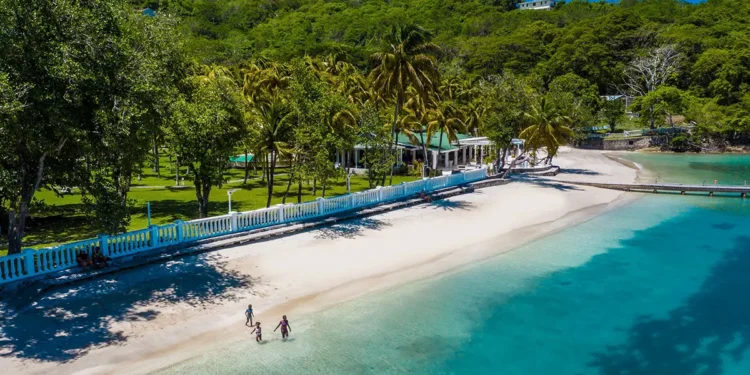What divine inspiration dreamt up the island of Bequia?
Pronounced ‘Bekwey’ this 7-mile stretchmeans ‘island of the clouds’ in ancient Arawak. It’s one of 32 islands that make up St Vincent and The Grenadines. Home originally to a small group of Caribs, the French and later the Brits then presided. Bequia developed less from sugar as from sea-island cotton and indigo, from boat building (especially schooners), whaling and merchant seamen.
The Sail House is a striking new addition to the architectural landscape of the island and not generally available to rent unless you get lucky like me with brotherly connections! It was the 7-year project of owners Mikey and Nicola (2 in design and 5 in implementation). The organic process resulted from the owners’ living on a boat for 3 years. They used all their experience of the elements and carried out extensive solar, wind and rain studies. They really have made their dream come true.
With its high tensile fabric roofs over a series of individual buildings cascading down a hill, some compare it to a butterfly, others to a swaying manta ray. For me it had a wealth of aspects, both literal and figurative. Like a yacht perched feet above sea level it’s uber-cool, inspirational and truly unique.
The Sail House website has “Bequia the little island that rocks” as its mantra. It’s used both as an artistic space with a music recording and rehearsal studio and a film/photo shoot location.
With no air conditioning, doors, walls or windows it’s the ultimate in indoor-outdoor living: alive to the roar of the sea and the wind at night. Totally aligned with nature both in situ and design. For the flooring, decking and the terrace are all clad in recovered Indonesian ironwood promoting both sustainability and eco-friendliness.
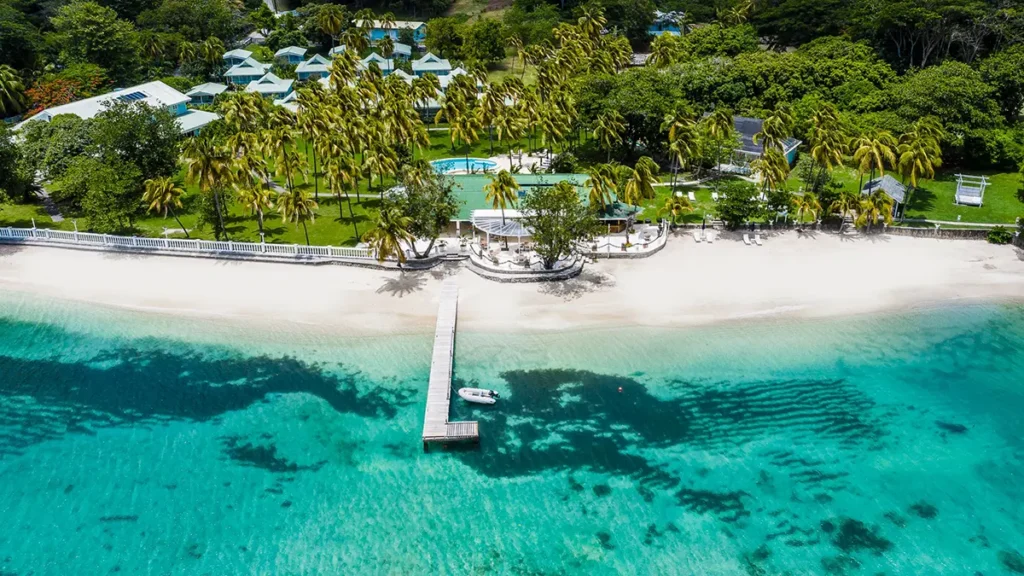
I delighted in the ‘crow’s nest’ and I will forever hanker after the panoramic view from the master bedroom. Both look out over both sides of the island and the islands beyond. It’s beyond James Bond. Choose your beach for today, your island for tomorrow read its menu.
Nowadays 70% of Bequia’s economy is tourism and the rest comes from fishing. There are no private beaches and the 5000 residents best traverse the hills in four-wheel-drive and are refreshingly respectful of their island’s beauty. For tourists to get off their sun-loungers in the constantly warm temperature the more adventurous are blessed with wonderful snorkelling, kayaking and hiking.
So up I got from my supine position and halfway along the Belmont Walkway reached Dive Bequia. I went on one of their twice-daily 90-minute snorkelling and SCUBA trips out in their boat to Rocky Bay and Devil’s Table. Here, amongst drifts and fringing reefs, were marine life as diverse and exotic-sounding as trumpet fish, sergeant-major and puffer fish. The view back at the harbour exhibited the bright coloured houses sprinkled up the hillsides.
At ‘D’ Harbour’ (the locals’ name for Port Elizabeth) there’s all the exuberance of locals with heads balancing fruit walking past street vendors and blaring reggae. Wooden houses climb up steep hillsides, in shades of blue, orange and lime, with picket-fence porches, with frangipani and paths lined with tamarind, Madagascar periwinkles and croton plants.
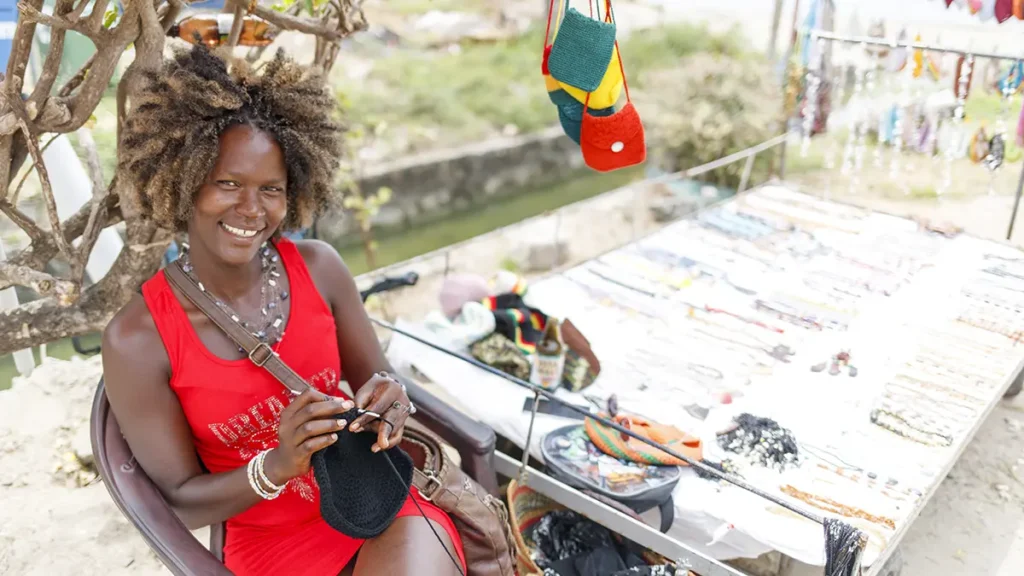
Near ‘d Harbour’, the town at Admiralty Bay and easy to find along the beautifully-lit Belmont Walkway is Frangipani. It’s right by a jetty and perfect for yachties to moor and dingy their way to the table. Bands strike up some evenings and there’s sport on the TV. The restaurant, family-owned like many, has been in existence since 1967, and is named after one of the beautiful local flowers. Beneath the lovely fretwork that front the pagodas live music plays regularly before a lit-up courtyard. It’s wonderfully dreamy.
The sea around Bequia is a paradise for yachties. No island is over 3 hours away and ever-present easterly trade winds blow at a steady 15 knots. Boats have always been central to the island’s prosperity. There seemed more moored in the bays than houses on the hillsides. Indeed the Friendship Rose, a local tour boat, was so admired by Bob Dylan that he had his own ‘Water Pearl’ boat built here.
For a different night out by the harbour I strongly recommend The Fig Tree. It’s run by the charming, charismatic Cheryl, two times a great-grandmother. Here a band of three elders in tropical shirts played like the Bueno Vista Social Club or as though on rocking chairs in their porch beneath cane lanterns swaying in the breeze. From the Fish Friday Dinner Menu, which offers veggies their own choices, I ate the freshest of grilled mahi-mahi as I watched the boat masts twinkle like terrestrial stars.
Everywhere I could hear the slow lapping of the waves as they unfurled and cascaded their sound upon sand. The sight of the indigenous mangos, tamarinds, sapodilla and creole plums excited my appetite. I reached Lower Bay with the beach entirely mine. I passed mango and coconut trees to reach De Reef. It’s a restaurant housed in a big, airy pavilion and enveloped by seven palm trees. Here I loved my callaloo (spinach) soup, and my grilled swordfish. It’s mixed with locals which is always a good sign and De Reef lent me a sun lounger to let my food go down before I dipped into the clearest of water out in front. I then walked along over a ridge to admire the many boats moored in Princess Margaret Beach.
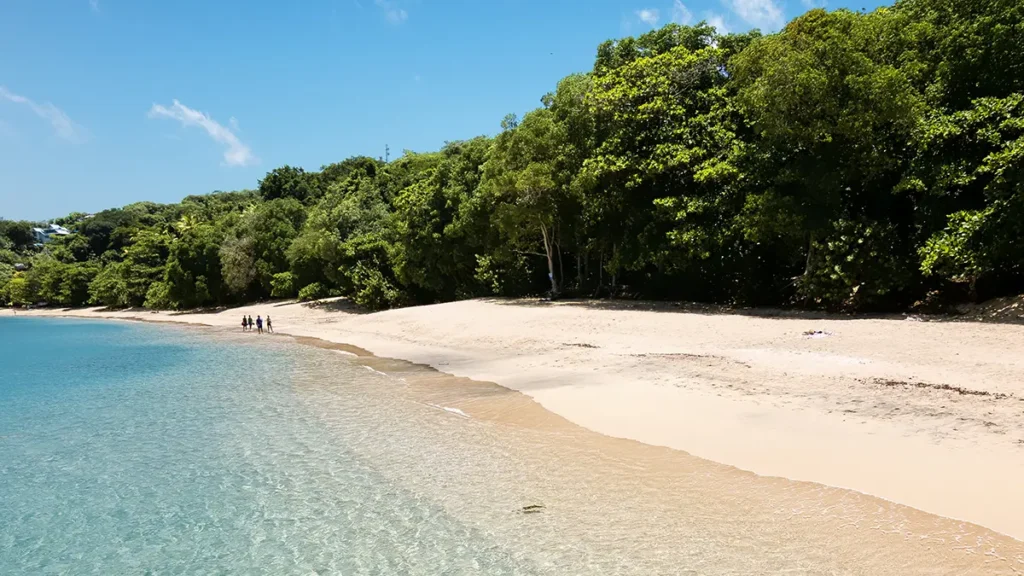
I hired a car from Steve (who also does boat trips) at Highrider highrider.vc@gmail.com and went exploring. Of the many secluded spots, the Windward side has the ferocity of the Atlantic Ocean potion to contrast with the leeward calm of the bays. Industry Bay and Hope Bay are particularly special. As I hiked the northern section my guide sardonically quipped “Stick to the path for, if a coconut falls on you, you won’t remember the island!”
Higher up on Lower Bay is Fernando’s Hideawayis up a steep road from Lower Bay. It felt so atmospheric as I heard the waves and saw the divine sunset. It’s set like a treehouse amongst chunky almond trees with its pale blue veranda. It proudly promotes itself as offering ‘authentic Caribbean cuisine’. It’s run by Fernando who is a superlative chef. I loved my eggplant and butternut squash soup followed by my coconut butterscotch brownie that Fernando likes to call a ‘blondie’.
There are fish with exotic names like wahoo, dorado and barracuda and birds called brown trembler and whistling warbler, rufous-throated solitaire and the purple-throated carib. Tiny black hummingbirds with olivine streaks alighted in front of me in stark contrast in proximity and size to the humpback whales discernible miles out to sea.
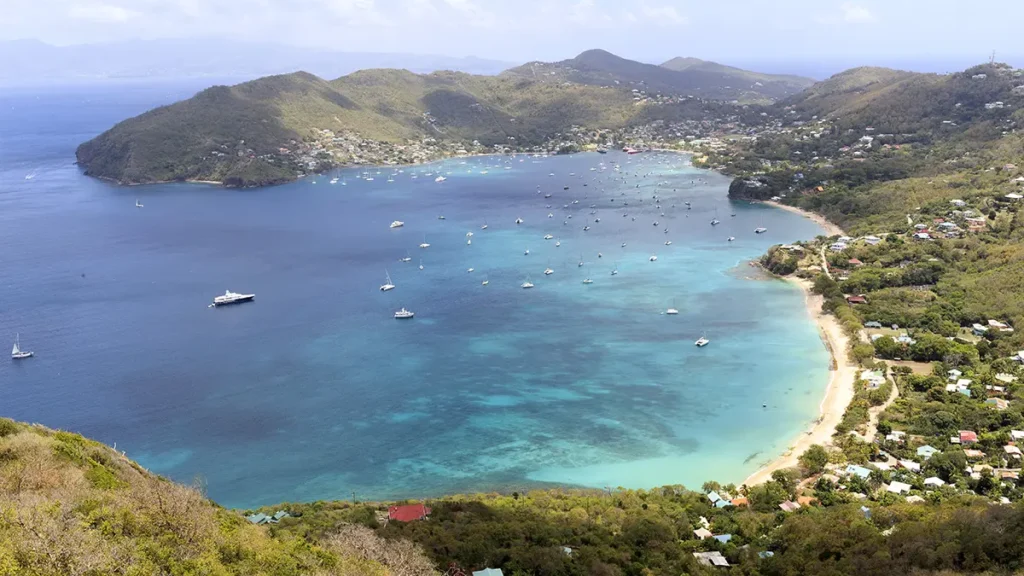
I sat beneath canvas canopies on the splendid Princess Margaret Bay at Jack’s Beach Bar. It’s uber-cool with its own boutique, its navy blue and white bistro chairs and its tasteful, jolly scattered cushions. You can never go wrong with a ‘catch of the day’ and after my ceviche and coconut-coated shrimps came my grilled barracuda with a passion fruit-dressed salad.
For somewhere to stay I heartily recommend The Lookout Bequia. Both the Ocean Deck and Hummingbird Apartments are perfectly placed between two of the island’s best beaches (Princess Margaret and Lower Bay). It all works so well due to the respectful distance but ever-helpful presence of owners Chris and Louise. Not just are the apartments surrounded by the exotic delights of fruit trees including bananas, oranges, limes, star fruit, papaya and sugar apple but the view from the deck is forever blessed by rainbows, sunsets or stars.
I must go back. Whenever but soon!
Adam travelled courtesy of St. Vincent and The Grenadines Tourism Authority (see www.discoversvg.com or email svgta.uk@discoversvg.com for more information). He had further support from Heathrow Express www.heathrowexpress.com and from Holiday Extras www.holidayextras.co.uk (0800 316 5678) who offer airport lounges at all major UK airports and many international destinations). He was covered by online travel insurance specialist, CoverForYou (www.coverforyou.com, 0207 183 0885).
Adam Jacot de Boinod worked on the first series of QI the BBC programme for Stephen Fry and is the author of The Meaning of Tingo and Other Extraordinary Words from around the World published by Penguin Books.

